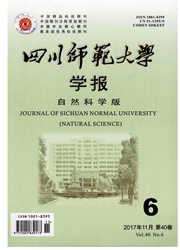

 中文摘要:
中文摘要:
当前,四川省正处于快速城镇化阶段,面临着许多突出的问题,特别是城镇化的协调发展尤为突出。基于协调度概念,从人口、经济、空间、社会四个层次构建评价指标体系,对2003—2014年四川省的城镇化发展协调度进行测度。结果表明:四川省城镇化协调度水平总体偏低,处于持续提升的过程且存在明显的地域差异;各子系统均呈现上升趋势,彼此间差异在逐年减小,由人口导向型城镇化转变为经济导向型城镇化;全省综合城镇化和协调度水平(除攀枝花外)均表现为沿盆地中心向外围呈放射状衰减的空间分布格局。
 英文摘要:
英文摘要:
Sichuan Province was in the stage of rapidly urbanization, facing with many problems in which the coordinated development was of great significance. This paper constructed the indexes of urbanization system from four aspects of population, economic, space, society based on the concept of coordination of degree, measuring the urbanization development coordination degree of Sichuan Province from 2003 to 2014. The results showed that : The overall coordination degree of urbanization was low, but in the process continued ascension and had obvious regional differences. Dif- ferences between subsystem decreased year by year and constant in the process of uprising, oriented by the population urbanization into economic ur- banization.The province's spatial distribution pattern of comprehensive level of urbanization and coordination degree were displayed (except Panzhi- hua) along the basin center to the periphery radiated attenuation.
 同期刊论文项目
同期刊论文项目
 同项目期刊论文
同项目期刊论文
 期刊信息
期刊信息
